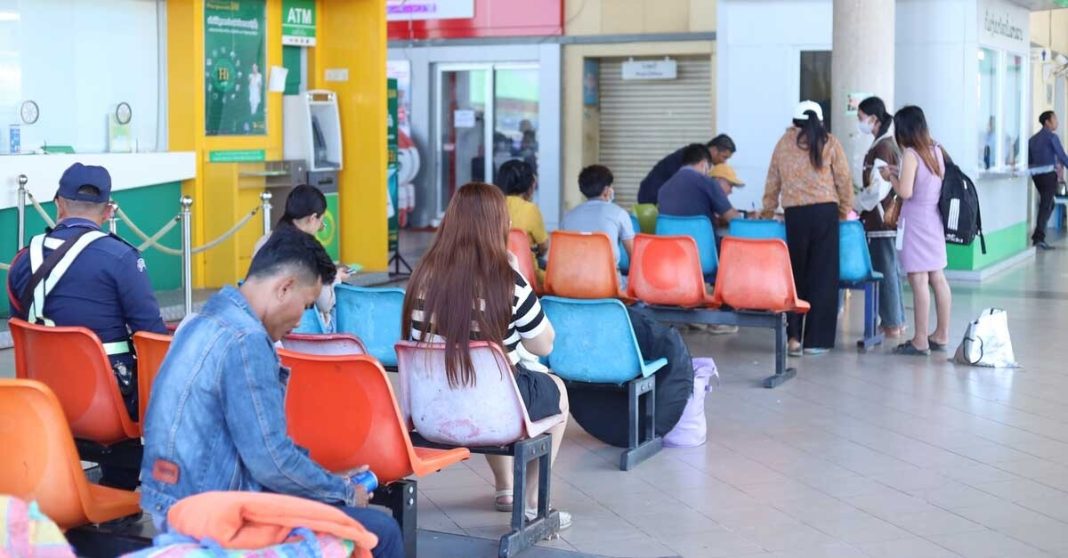Thailand needs more workers, and the younger Lao population is all set to step in.
As Thailand’s population gets older, new job opportunities emerge for foreign workers, especially from neighboring countries.
“We lack laborers, and the only way to fill the gap is to import workers from nearby countries,” Decha Pruekphathanarak, the deputy permanent secretary at the Thai Ministry of Labor, said at a conference organized by the International Organization for Migration on 17 December.
In response to increasing requests from companies for more migrant workers, Thailand has taken steps to facilitate their entry into the country. The government recently granted a stay extension to migrant workers from Myanmar, Laos, Cambodia, and Vietnam until 20 January, 2024, while they go through the work permit application process.
Specifically, for workers under a memorandum of understanding (MoU) between the Thai government and Laos, Myanmar, and Cambodia, the deadline for their stay extension has been moved to 30 April, 2024, from the initial date of 31 December, 2023.
This move comes at a crucial time as Laos grapples with an economic downturn, high inflation, and currency depreciation over the past year. The challenging economic conditions have made the prospect of working in Thailand more appealing for Lao migrant workers.
One driving factor behind the increasing migration from Laos is the low wages in the country. Despite some incremental increases, these wages have struggled to keep pace with the continued depreciation of the local currency. As a result, workers in Laos are actively seeking employment opportunities in other countries, contributing to the growing demand for migrant labor in Thailand.
“The current economic situation in Laos is dire, and the pay is low. There are many more benefits here as a laborer in Thailand, where I can earn up to THB 500 (USD 14.25) per day,” Saengphet Xayasane, a Lao laborer working in Udon Thani, Thailand, told the Laotian Times in a previous interview.
This remains true today, as Laos’ minimum wage remains at LAK 1,600,000 (USD 83).
Further making the move to Thailand even more appealing is the Lao government authorizing and facilitating workers to pursue temporary employment abroad in countries such as South Korea, Thailand, and Japan through legal channels and programs.
Somsay Ouanphilalay, a consultant attached to the Ministry of Industry and Commerce, however, suggests otherwise, suggesting that such schemes usually include short-term employment for workers to acquire more skills and return to Laos to implement what they learned overseas.
Thailand’s declining birth rate since the 1960s, combined with Laos’ current economic recession, leaves the Lao labor market with limited options. With low wages and high living costs, the labor market in Laos may continue to witness a trend of migration to neighboring Thailand. This migration reflects not only economic considerations but also the pursuit of skill development, with workers aiming to contribute to Laos’ development upon their return.



